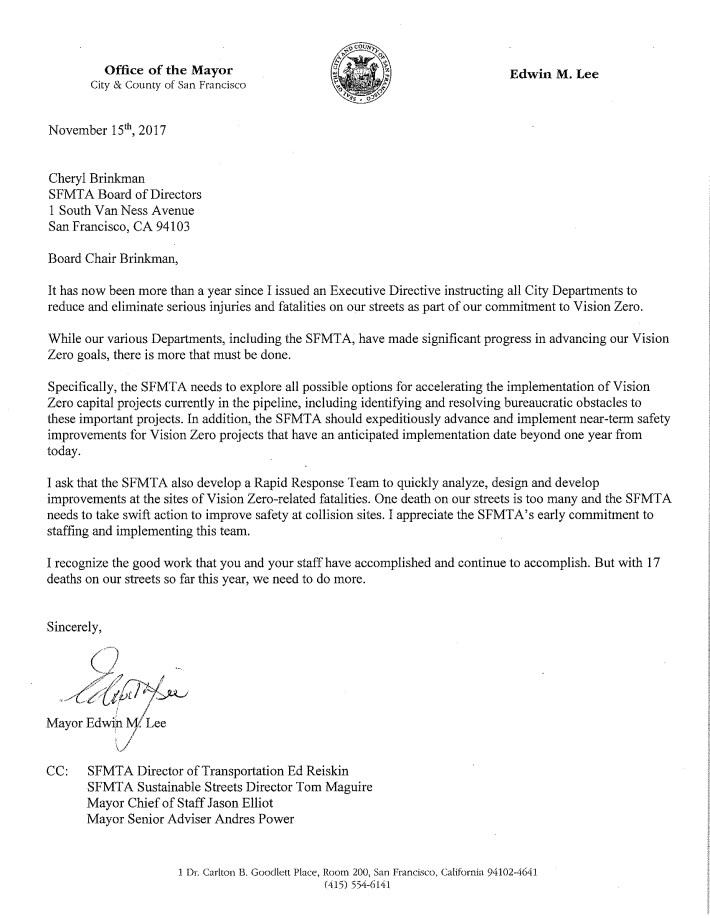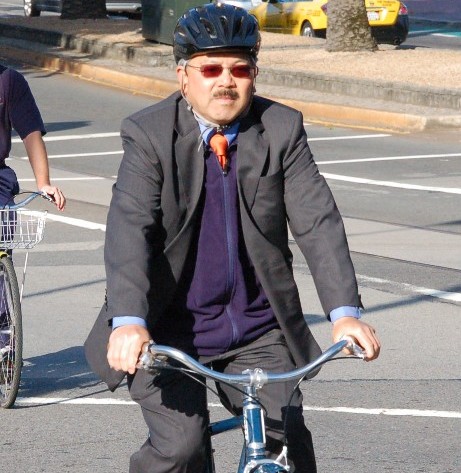This has been, once again, a bad year for road safety in San Francisco. In the past few weeks, we've seen a death and a serious injury in the Richmond District, a death on Sloat at 36th, and the death of a man at the Fell crossing at Baker. Advocates, frustrated with the carnage and lack of progress in pursing the city's Vision Zero goals, called on the mayor to intervene and stop delays on safety projects caused by inter-agency conflicts.
The result was not another Executive Directive, as some advocates had hoped. However, today the mayor sent the following letter to Cheryl Brinkman of the SFMTA Board of Directors:

Advocates, when they got wind of the letter, seemed cautiously optimistic.
"Walk San Francisco is pleased the mayor has swiftly responded to our urgent call to action and has given a clear directive to SFMTA and the city family to act on known dangerous intersections and corridors," said Jodie Medeiros, Executive Director of Walk San Francisco. "Strong leadership like this is vital if we are to reach our shared goal of reaching Vision Zero in six years. We look forward to seeing long-delayed projects start to move, so that everyone using San Francisco streets can be safe."
Brian Wiedenmeier, head of the San Francisco Bicycle Coalition, expressed similar optimism in a conversation with Streetsblog earlier this week. He had this to say in a prepared statement about the letter, issued today: "The SF Bicycle Coalition strongly agrees with Mayor Lee that 'we need to do more' to prevent people from being injured or killed on our streets. We hope that the SFMTA and all other city agencies heed his strong words, and move with speed to construct the safety improvements we know are needed to save lives. We will be watching closely and calling out further delays."
Streetsblog agrees and hopes the mayor will intervene directly when it comes to disagreements between SFMTA and the fire department, which have caused continual delays on key safe-streets projects. If the mayor and his staff are willing to literally lock department heads into a room until they sign onto viable solutions, long-delayed projects may finally move forward. And the 'Rapid Response' team, if it actually happens, seems to follow the 'Black Spot' model from the Netherlands--the idea that if someone is seriously hurt or killed on our streets, an investigation will happen immediately, and changes will be made to make sure it doesn't happen again.
A letter is a good start. But it will be meaningless without continued executive pressure and strong leadership from the mayor. And that includes a willingness to fire department heads who won't get with the program. Now we'll see if Mayor Lee and his staff have the will power to follow through.





